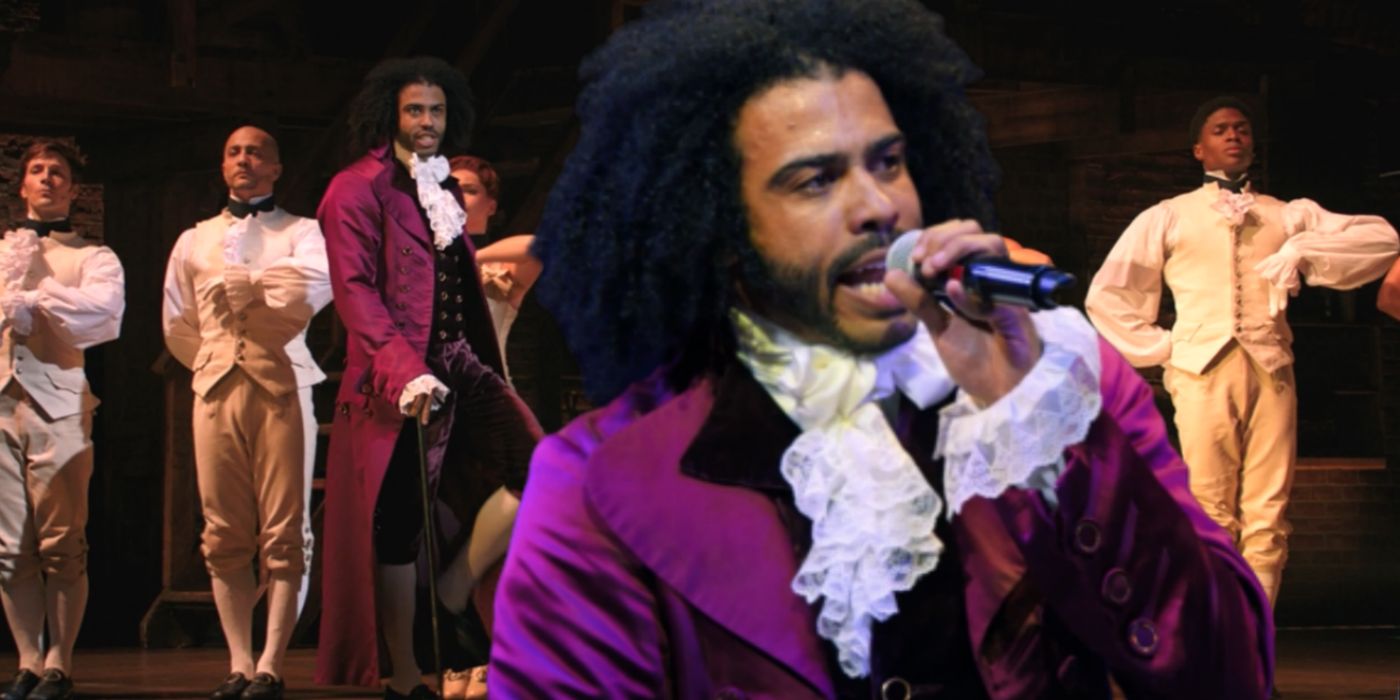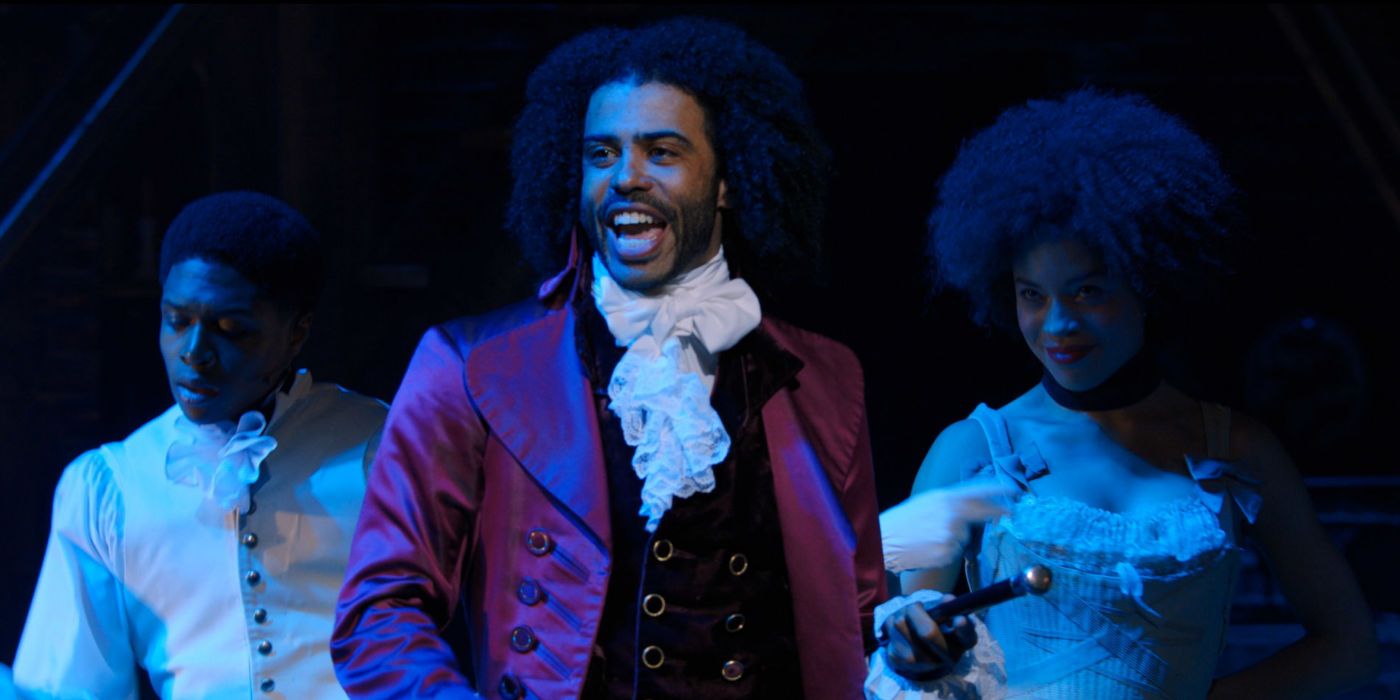Why exactly does Thomas Jefferson walk with a limp in the musical Hamilton? Now streaming as a movie on Disney+, The Lin-Manuel Miranda play features a hip-hop aesthetic and street-savvy characters, but streamers may be curious if Jefferson's physical movements were inspired by historical facts or a modern sensibility. In Hamilton, Daveed Diggs portrays Marquis de Lafayette in Act I and Jefferson in Act II.
Hamilton's second act begins in 1789 with Jefferson returning home after serving as the U.S. Ambassador to France. During the song "What'd I Miss," Diggs playfully struts around as his character references various life achievements. Jefferson carries a cane and seemingly limps while gliding across the stage, however the character's dance moves suggest that he's in decent physical condition. Jefferson's big personality is further reinforced when he boasts about immediately becoming the Secretary of State. After "What'd I Miss?," Jefferson once again revels in the Hamilton spotlight during "Cabinet Battle #1."
In Hamilton, Jefferson's limp correlates with egocentric behavior and hip-hop culture. During a 2016 appearance on The Late Show with Stephen Colbert, Diggs describes Jefferson as a "rock star" and explains the context for his return to America. Because the character is so confident while recalling his political and personal experiences, the limp connects to what's known as the "pimp walk." In other words, there's a sense of "swaggering." So, the Jefferson persona is a blend of pop culture and street culture. His purple attire also makes him look the late pop icon Prince, which underlines the character's sense of entitlement. In 2017, Hamilton actor Chris De’Sean Lee explained (via USA Today) the essence of Jefferson for a Chicago production of the play:
"With Jefferson, he’s just grounded as hell. He’s a little more loose, he’s down to the ground. He has a limp in his walk. He leans. He doesn’t really care. His gravitas is that of a pampered prince. There’s an energy to it. An ‘I don’t have to try to be great’ kind of walk."
Jefferson walks with a cane in Hamilton but doesn't really need it, yet the inclusion of the object is indeed based on historical facts. By 1805, Jefferson had become U.S. President and Hamilton had died the year before. When Jefferson's 14-year-old granddaughter visited Monticello (the family's plantation), she discovered that Jefferson had been sent an "elegant walking staff" that was allegedly a gift from Napoleon Bonaparte, who had just become Emperor of the French. It was later revealed to be a gift from a physician named John F. Oliveira Fernandes. In Hamilton, the cane adds a street culture element, but also links to Jefferson's presidency.
In real life, Thomas Jefferson wrote extensively about his need to exercise. Prior to arriving in America, he penned letters about his various routines, and documented memorandums from 1787 even show that he walked at "the rate of 4 3/20 miles an hour." By the 1810s, Jefferson continued to write about his exercise routines, which suggests that he didn't need any type of walking assistance. In 1812, at age 69, Jefferson expressed his love for horseback riding to John Adams, the second president of the United States:
"You and I have been wonderfully spared, and myself with remarkable health, and a considerable activity of body and mind. I am on horseback three or four hours of every day; visit three or four times a year a possession I have ninety miles distant, performing the winter journey on horseback. I walk little, however, a single mile being too much for me."
Hamilton: What The Musical Changes (& Leaves Out) About Thomas Jefferson


